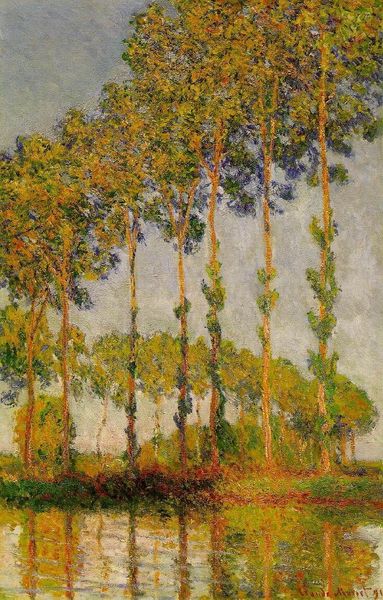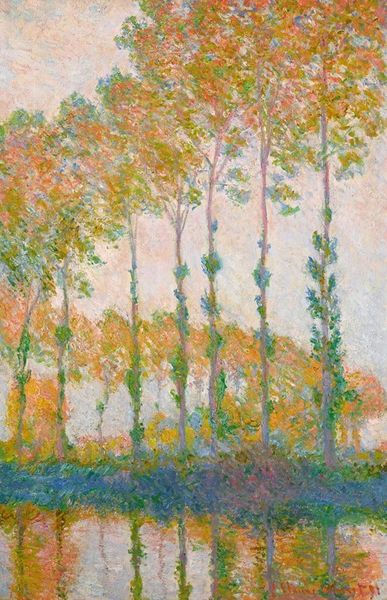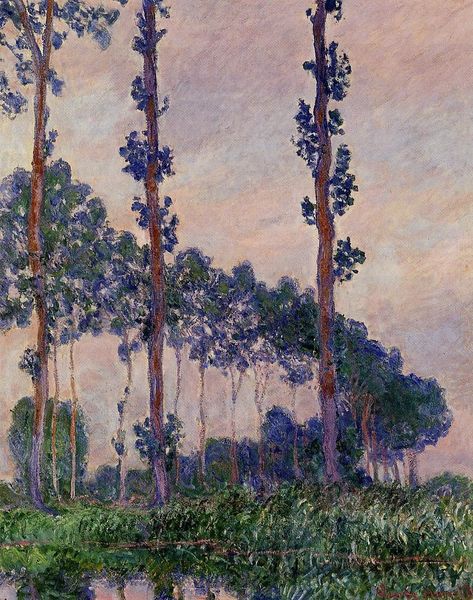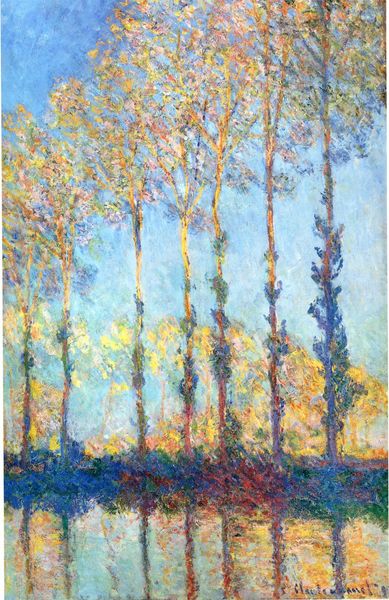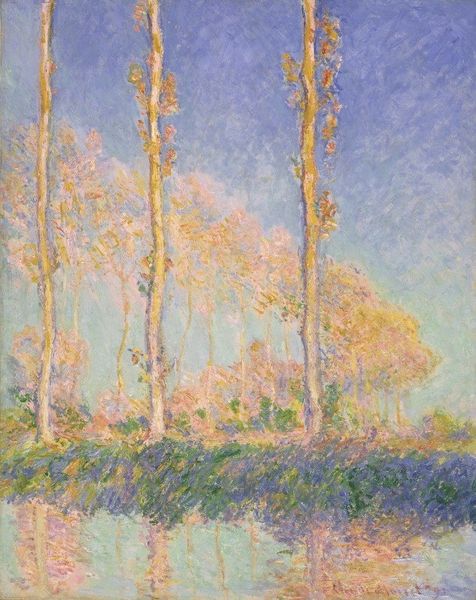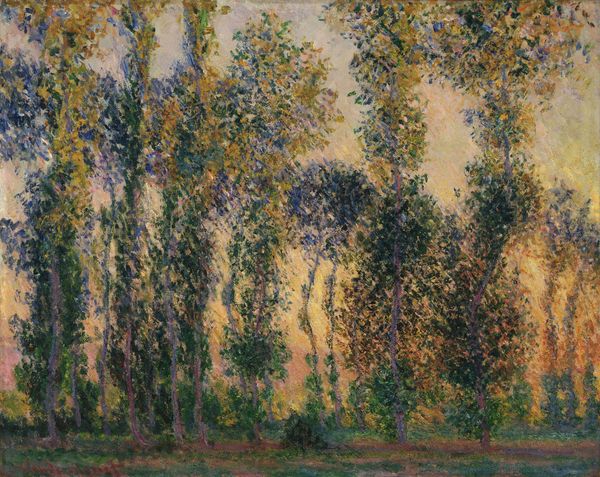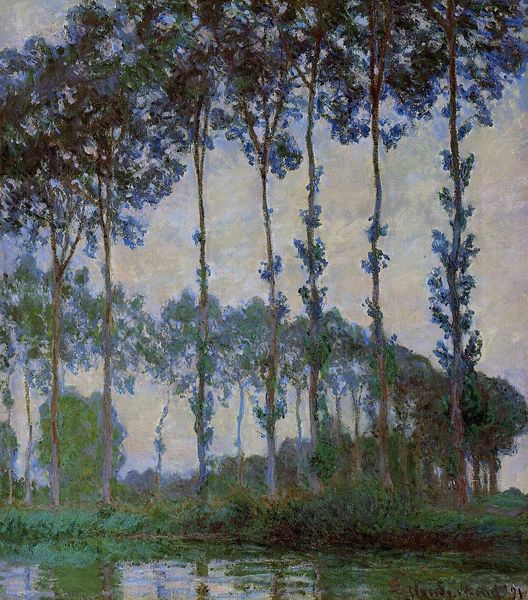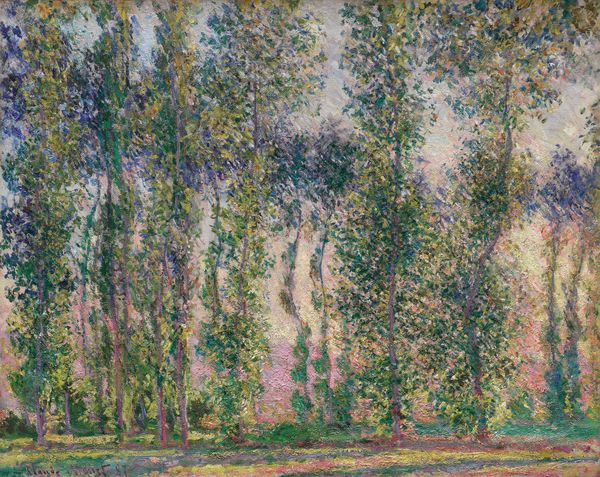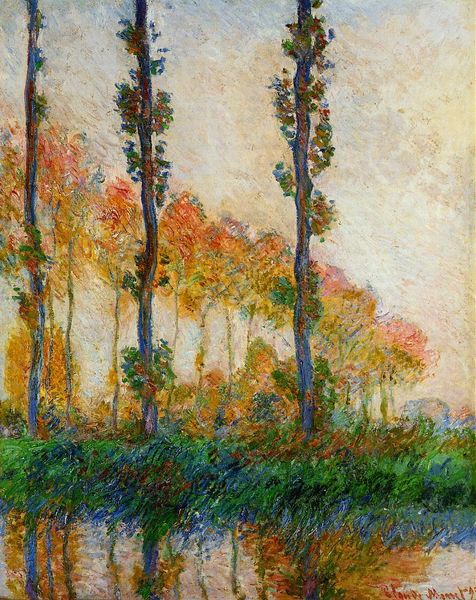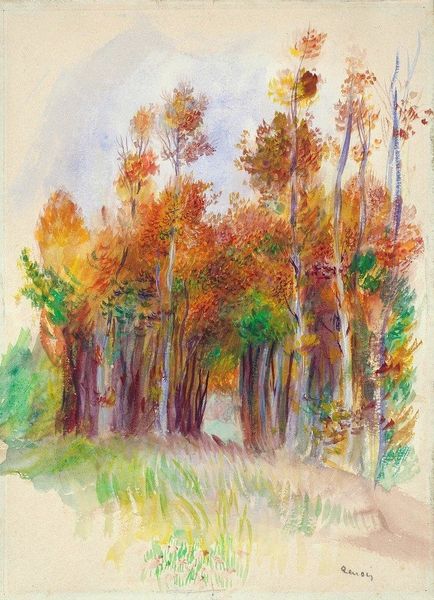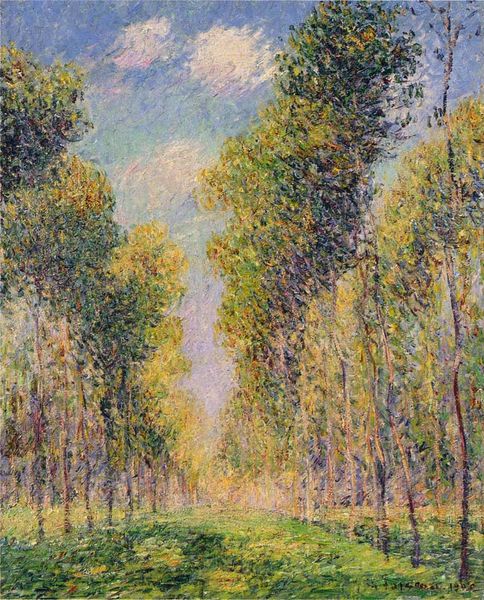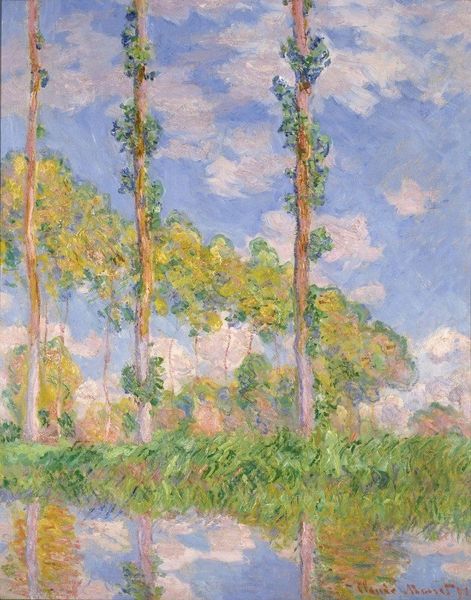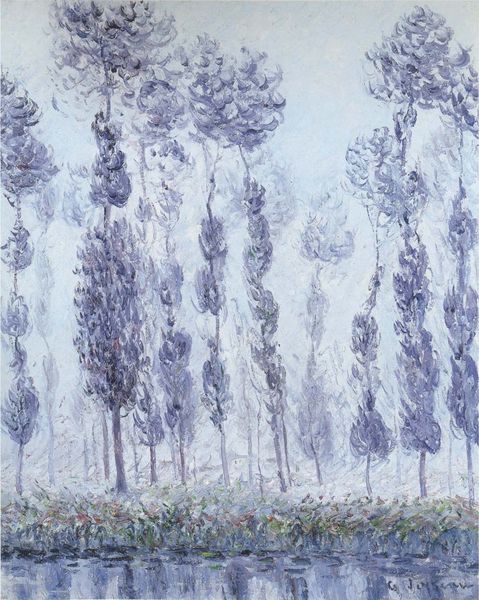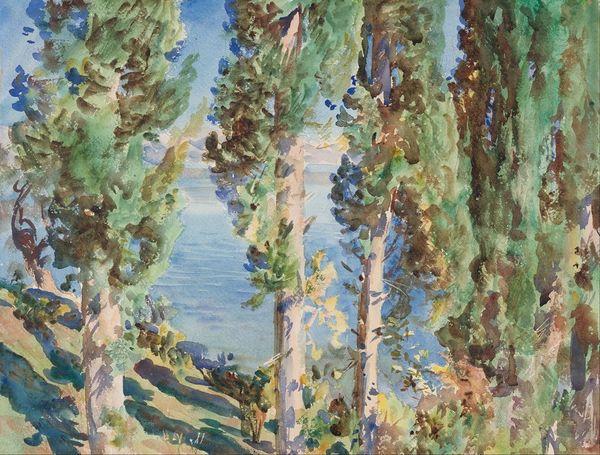
Copyright: Public domain
Editor: Here we have Claude Monet’s “Poplars,” painted in 1891, an oil painting rendered en plein-air. The reflections on the water really capture my attention! How do you interpret this work? Curator: This work, to me, speaks volumes about Monet's relationship with the changing landscape of France, especially considering the industrialization occurring during his lifetime. The poplars, arranged almost like sentinels, could be seen as symbols of nature standing tall against the encroachment of modernity. Consider the socio-political climate of the time; how might this series reflect anxieties about environmental degradation and loss of the rural idyll? Editor: So you are suggesting these aren’t just pretty trees, but also have political weight? I hadn’t thought about it like that! Curator: Precisely. The rhythmic repetition of the trees, that verticality, also suggests a certain resilience. And the light, the shimmering Impressionistic light - does that perhaps highlight the preciousness and fragility of the natural world? Editor: That's fascinating. It's easy to get lost in the beauty, but knowing the context gives it such deeper meaning. What a contrast between what looks free, the trees and sky and river, with anxieties about industrialization bearing down. Curator: Indeed. Looking at art this way helps us understand not just what was painted, but *why* it was painted, and what conversations it sparked or participated in at the time – and can even do now! Editor: I'll definitely look at Impressionism differently now. Curator: Hopefully, it will make you consider the broader social and historical context surrounding all works, expanding our interpretations of beauty and aesthetics.
Comments
No comments
Be the first to comment and join the conversation on the ultimate creative platform.
